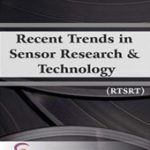[{“box”:0,”content”:”[if 992 equals=”Open Access”]
Open Access
n
[/if 992]n
n
n
n
n
- n t

n
Aditi Rai, Usha Shukla
[/foreach]
n
n
n[if 2099 not_equal=”Yes”]n
- [foreach 286] [if 1175 not_equal=””]n t
- Student, Assistant Professor, Department of Physics, Amity University, Lucknow Campus, Department of Physics, Amity University, Lucknow Campus, Uttar Pradesh, Uttar Pradesh, India, India
n[/if 1175][/foreach]
[/if 2099][if 2099 equals=”Yes”][/if 2099]nn
Abstract
nSmart materials, also known as responsive or intelligent materials such as chemochromic materials changes colour upon exposure to a different environment or when react with different chemicals. Chemo chromic sensors are specially designed for robustness and can be used for leak detection in the vicinity of connections, valves, or Hydrogen line outlets. They can be altered, nevertheless, for a variety of uses. These are the materials whose colors and reflective qualities vary when exposed to various substances. This is a result of several chemical reactions that the material is undergoing. When an electron that was once a component of a chemical bond dislocates and takes up a new place inside the molecule, the substance absorbs a certain color of light depending on whether the electron is there or not. The aim is to provide a simple and robust Hydrogen sensor, when exposed to Hydrogen, changes colour and is not prone to failure. The sensor can be left in place during hazardous operations and does not require any operator or power intervention. Here, we will get to know about the use of these materials as sensors in different fields like Hydrogen detecting sensor, sensor for detecting Hypergolic fuels that are hazardous in their very nature.
n
Keywords: Sensors, chemogenic materials, chemo chromic hydrogen sensor, NASA, hypergolic fuels
n[if 424 equals=”Regular Issue”][This article belongs to Recent Trends in Sensor Research & Technology(rtsrt)]
n
n

n
n
n
nn
nn[if 992 equals=”Open Access”] Full Text PDF Download[else] nvar fieldValue = “[user_role]”;nif (fieldValue == ‘indexingbodies’) {n document.write(‘Full Text PDF‘);n }nelse if (fieldValue == ‘administrator’) { document.write(‘Full Text PDF‘); }nelse if (fieldValue == ‘rtsrt’) { document.write(‘Full Text PDF‘); }n else { document.write(‘ ‘); }n [/if 992] [if 379 not_equal=””]n
Browse Figures
n
n
n[/if 379]n
References
n[if 1104 equals=””]n
- Ferrara and M. Bengisu. Materials that change color. Germany:SpringerBriefs Appl. Sci. Technol., pp. 9–60, Jun. 2013, doi: 10.1007/978-3-319-00290-3_2.
- Li SL, Han M, Zhang Y, Li GP, Li M, He G, Zhang XM. X-ray and UV dual photochromism, thermochromism, electrochromism, and amine-selective chemochromism in an anderson-like Zn7 cluster-based 7-fold interpenetrated framework. Journal of the American Chemical Society. 2019 Jul 21;141(32):12663–72.
- O. Bockris, “Hydrogen.,” Mater. (Basel, Switzerland), pp. 2073–2091, Nov. 2011, doi: 10.3390/ma4122073.
- Heidman, Chemochromic Hydrogen Leak Detectors. Physical Sciences, John F. Kennedy Space Center, NASA Tech Briefs, June 2009, https://ntrs.nasa.gov/api/citations/20090022337/
downloads/20090022337.pdf - Shukla and S. Sharma, “Types and Applications of Optoelectronic Devices,” Res. Rev. J. Pure Appl. Phys., vol. 10, no. 2, pp. 10–25, Mar. 2022.
- C. Whitten et al., “Chemochromic hydrogen detection,”Sensors for Propulsion Measurement Applications, May 2006, vol. 6222, p. 62220C, doi: 10.1117/12.663534.
- Shukla Usha. (2023). Carbon Nanotubes: Potentially Revolutionary Impact of Nanomaterials. Journal of Nanoscience & Reports, 5(2), 2–7.
- A. Naqvi, F. A. Al-Matouq, F. Z. Khiari, A. A. Isab, M. Raashid, and Khateeb-ur-Rehman, “Hydrogen, carbon and oxygen determination in proxy material samples using a LaBr3 : Ce detector,” Appl. Radiat. Isot., vol. 78, pp. 145–150, Aug. 2013, doi: 10.1016/j.apradiso.2013.04.006.
- S. Patent, “VI (5) IAI,” Aug. 2012. https://patentimages.storage.googleapis.com/
e2/50/b5/b26cfbf9335482/US8202268.pdf - “Desai SC, Willitsford AH, Sumanasekera GU, Yu M, Tian WQ, Jayanthi CS, Wu SY. Hypergolic fuel detection using individual single walled carbon nanotube networks. Journal of Applied Physics. 2010 Jun 1;107(11).
nn[/if 1104][if 1104 not_equal=””]n
- [foreach 1102]n t
- [if 1106 equals=””], [/if 1106][if 1106 not_equal=””],[/if 1106]
n[/foreach]
n[/if 1104]
nn
nn[if 1114 equals=”Yes”]n
n[/if 1114]
n
n

n
n
n
n
n
| Volume | 10 |
| [if 424 equals=”Regular Issue”]Issue[/if 424][if 424 equals=”Special Issue”]Special Issue[/if 424] [if 424 equals=”Conference”][/if 424] | 02 |
| Received | December 2, 2023 |
| Accepted | December 17, 2023 |
| Published | December 27, 2023 |
n
n
n
n
n
nn function myFunction2() {n var x = document.getElementById(“browsefigure”);n if (x.style.display === “block”) {n x.style.display = “none”;n }n else { x.style.display = “Block”; }n }n document.querySelector(“.prevBtn”).addEventListener(“click”, () => {n changeSlides(-1);n });n document.querySelector(“.nextBtn”).addEventListener(“click”, () => {n changeSlides(1);n });n var slideIndex = 1;n showSlides(slideIndex);n function changeSlides(n) {n showSlides((slideIndex += n));n }n function currentSlide(n) {n showSlides((slideIndex = n));n }n function showSlides(n) {n var i;n var slides = document.getElementsByClassName(“Slide”);n var dots = document.getElementsByClassName(“Navdot”);n if (n > slides.length) { slideIndex = 1; }n if (n (item.style.display = “none”));n Array.from(dots).forEach(n item => (item.className = item.className.replace(” selected”, “”))n );n slides[slideIndex – 1].style.display = “block”;n dots[slideIndex – 1].className += ” selected”;n }n”}]



